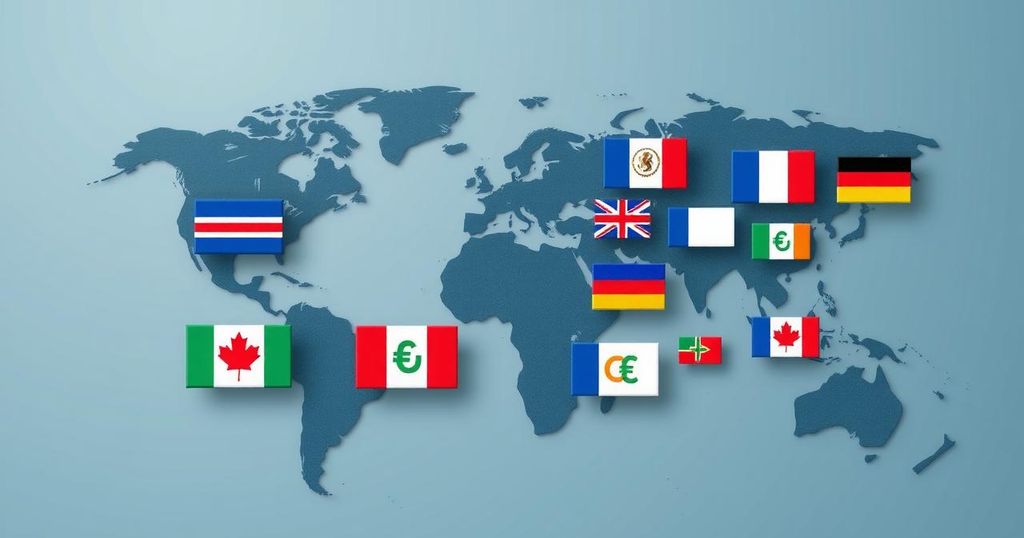Trump’s New Tariffs: The Impact on U.S.-India Trade Relations and Global Economy

On April 2, 2025, President Trump implemented a 26% “discounted reciprocal tariff” on India, following India’s 52% levy on U.S. goods. The announcement led to significant discussions about trade fairness, with various sectors anticipated to be affected, particularly electronics and gems. International reactions included warnings from global leaders about the implications for the world economy and urges for negotiations to resolve trade disagreements.
On April 2, 2025, President Donald Trump announced a 26% “discounted reciprocal tariff” on India, which is half the 52% levy that India imposes on U.S. goods. During his speech in the Rose Garden, he emphasized this tariff as a significant moment that he labeled as “Liberation Day,” describing it as pivotal for the rebirth of American industry. Trump expressed a desire to reclaim America’s economic destiny and wealth, stating his administration is focused on rectifying previous trade imbalances.
Trump elaborated on the challenges faced by American workers due to high tariffs from various countries, asserting that for years, the U.S. had been exploited economically. He criticized the tariffs imposed by countries like Thailand and India, noting significant disparities between the U.S. tariffs (2.4% on motorcycles, 2.5% on automobiles) and those imposed by other nations (up to 75%). Trump emphasized the policy of reciprocal tariffs, which means if other countries impose high tariffs on U.S. goods, the U.S. would respond in kind.
He presented charts illustrating the tariffs imposed by countries including India, China, and the EU, and highlighted India’s 52% tariff as excessive. Trump stressed that this new tariff structure is meant to address unfair trading practices while fostering negotiations to establish a level playing field. The U.S. Commerce Ministry indicated that it would analyze the impact of these tariffs, with the universal import duties to commence on April 5 and the remaining to be enacted by April 10.
In terms of the sectors affected, the U.S. tariffs could target nearly $14 billion worth of electronics and over $9 billion in gems and jewelry, while pharmaceutical exports from India remain exempt. Indian officials described the announcement as a mixed bag that would not be interpreted as a setback, given ongoing trade negotiations aimed at enhancing bilateral relations between the U.S. and India.
International reactions included Thailand’s call for exporters to seek new markets and the EU’s warning that Trump’s tariffs could damage the global economy. China also urged the U.S. to cancel the new tariffs, asserting their opposition to unilateral measures. The German auto industry expressed concern that such tariffs could harm global growth and employment. Overall, the introduction of these tariffs highlights a pivotal shift in U.S. trade policy towards a more protectionist stance, affecting various global markets.
President Trump’s announcement of a 26% reciprocal tariff on India marks a significant pivot in U.S. trade relations, aiming to balance unfair trading practices. This policy also highlights an escalating trend of protectionism which could adversely impact global trade dynamics. The international community’s responses indicate widespread concern over potential economic repercussions, underscoring the importance of maintaining open dialogue to resolve trade disputes effectively.
Original Source: m.economictimes.com







